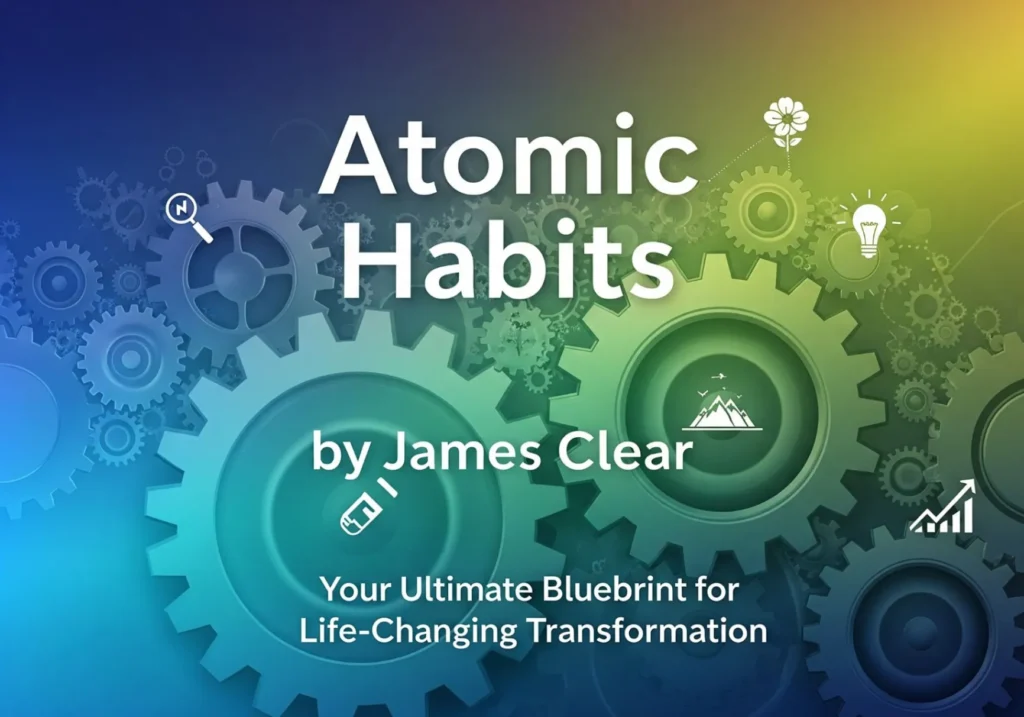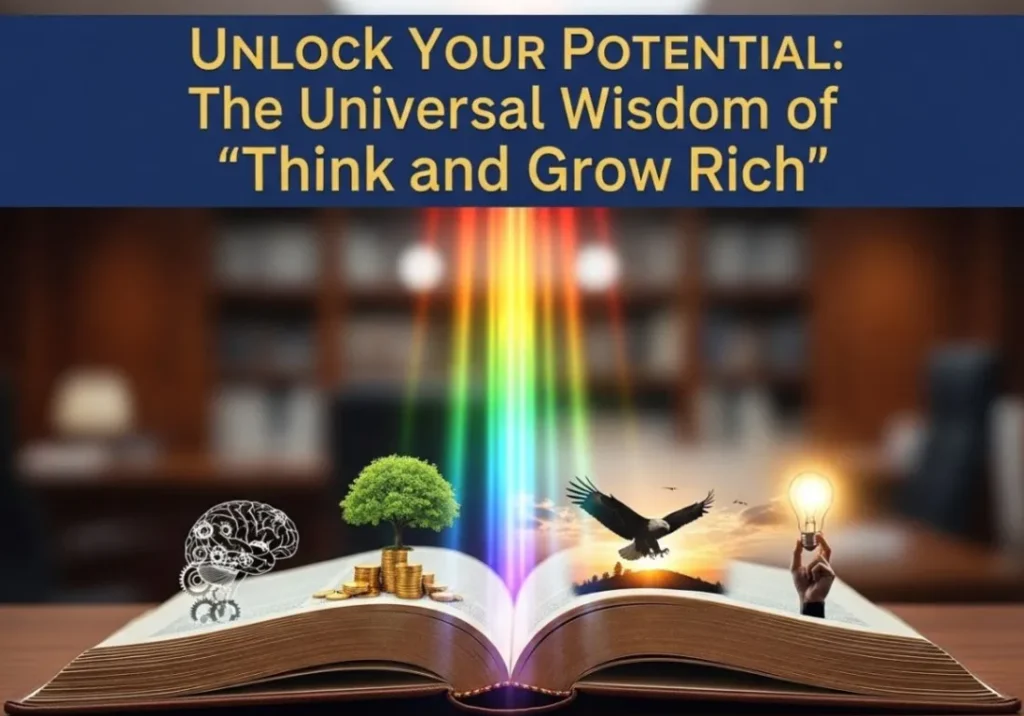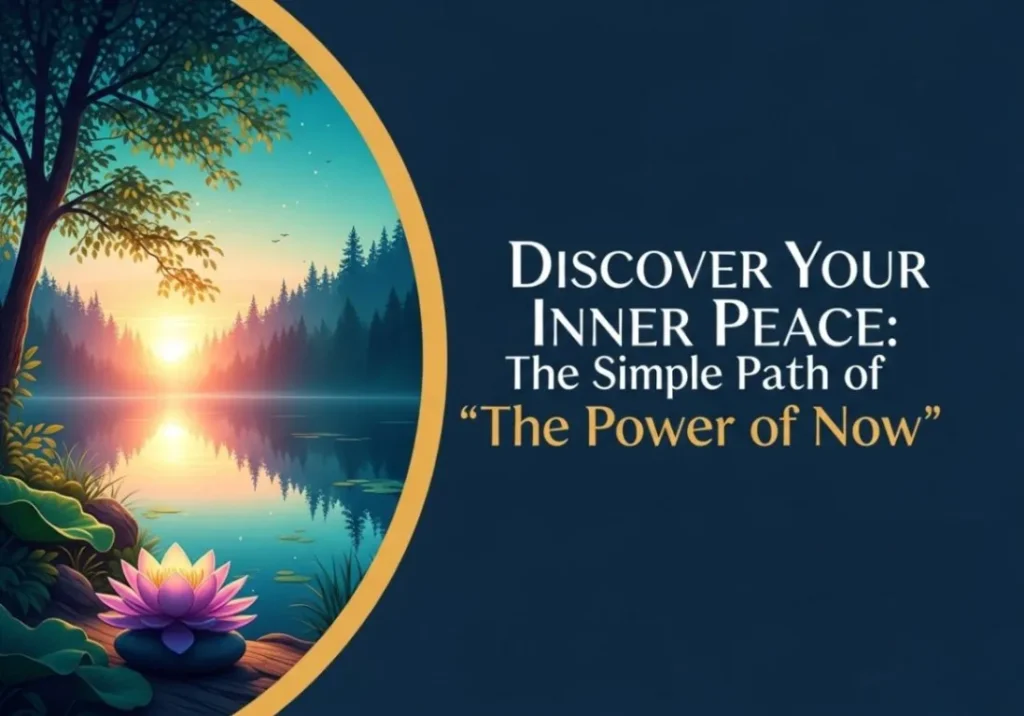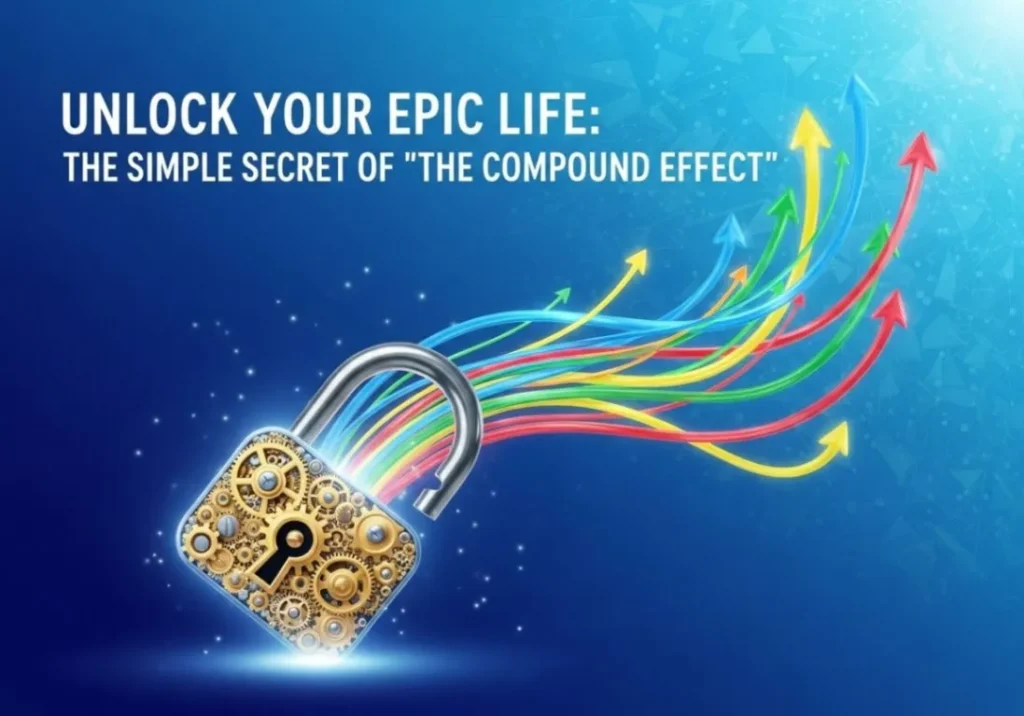An in-depth exploration of the habits, tactics, and philosophies of world-class performers.
What if you could distill the wisdom of more than 200 of the world’s most successful people—billionaires, icons, athletes, and artists—into a single, actionable playbook? What if you could peer into their daily routines, their biggest failures, their most unconventional beliefs, and the mental models they use to navigate life? That is the audacious premise of Tim Ferriss’s monumental book, “Tools of Titans: The Tactics, Routines, and Habits of Billionaires, Icons, and World-Class Performers.”
This isn’t a book you read; it’s a book you use. It’s a 700-page encyclopedia of high-leverage tools, a buffet of strategies where you are encouraged to pick and choose what resonates. For many, its sheer size is intimidating. For others, it’s a treasure chest. In this comprehensive 5,000-word guide, we will unpack this beast of a book, navigating its three core sections—Healthy, Wealthy, and Wise—to extract the most potent, actionable insights. We’ll explore the unifying patterns, spotlight key “Titans,” and provide a roadmap for how you can apply their wisdom to your own life, starting today.
Table of Contents
- 1. First, Who is Tim Ferriss? The Ultimate Human Guinea Pig
- 2. The Core Philosophy: Pattern Recognition and the 80/20 Principle
- 3. Part I: Healthy – Forging a Resilient Body and Mind
- 4. Part II: Wealthy – Deconstructing the Game of Financial Freedom
- 5. Part III: Wise – The Art of Living a Fulfilled and Examined Life
- 6. The Unifying Threads: What Do All Titans Have in Common?
- 7. How to Actually *Use* This Book (A Practical Guide)
- 8. Acknowledging the Criticisms: Is It All Cherry-Picked?
- 9. Conclusion: Your Personal Toolkit for a World-Class Life
1. First, Who is Tim Ferriss? The Ultimate Human Guinea Pig
To understand “Tools of Titans,” you must first understand its curator. Tim Ferriss shot to fame with his 2007 bestseller, The 4-Hour Workweek, a book that single-handedly launched the “lifestyle design” movement. But Ferriss is more than just a productivity guru. He’s a self-described “human guinea pig,” an angel investor in tech giants like Uber and Facebook, a polymath who has deconstructed everything from tango dancing to language learning, and, most importantly for this book, the host of The Tim Ferriss Show.
This podcast, one of the most popular in the world, is the raw material for “Tools of Titans.” In it, Ferriss conducts long-form interviews (often 2-3 hours) with people at the absolute top of their fields. He’s not interested in soundbites; he’s interested in the nitty-gritty details—the specific books they read, the supplements they take, the morning rituals they can’t live without, and the mental frameworks they use when things fall apart. The book is a direct result of Ferriss meticulously transcribing, organizing, and stress-testing the answers to his favorite question: “What do these people have in common?”
2. The Core Philosophy: Pattern Recognition and the 80/20 Principle
The book’s genius lies not just in the interviews themselves, but in Ferriss’s curation. He is a master of pattern recognition, applying the Pareto Principle (the 80/20 rule) to human performance. He looks for the 20% of habits, tools, and beliefs that deliver 80% of the results for these world-class performers. He’s not just reporting what they say; he’s highlighting the surprising overlaps between, say, a Navy SEAL commander and a Zen Buddhist master.
“The superheroes you have in your mind (idols, icons, titans) are nearly all walking flaws who’ve maximized 1 or 2 strengths. Humans are imperfect creatures. You don’t ‘succeed’ because you have no weaknesses; you succeed because you find your unique strengths and focus on developing habits around them.”
This philosophy liberates the reader. You don’t need to be perfect. You don’t need to adopt every single habit in the book. You just need to find the few that resonate with your personality and goals, and then apply them with ruthless consistency. The book is structured into three distinct sections to help you do just that.
3. Part I: Healthy – Forging a Resilient Body and Mind
The first section, “Healthy,” is arguably the foundation upon which wealth and wisdom are built. Ferriss notes that physical and mental well-being are prerequisites for sustained high performance. This section is a mix of cutting-edge science, ancient practices, and extreme physical protocols. The goal is not just to avoid sickness, but to build a robust, antifragile system.
Key Theme: The Power of the Morning Routine
An overwhelming number of Titans—upwards of 80%—have some form of a consistent morning routine. This isn’t about waking up at 4 a.m. for the sake of it; it’s about “winning the morning” to set a positive and productive trajectory for the entire day. The routines often contain a similar cocktail of activities.
Example – Jocko Willink (Navy SEAL Commander): Jocko’s routine is legendary for its spartan discipline. He wakes up before 4:35 a.m. (he posts a picture of his watch on Twitter daily), works out intensely for about an hour, and then works on his business or writing projects before most of the world is even awake. For him, the early morning workout isn’t just for physical fitness; it’s a daily act of conquering his own laziness and procrastination. Discipline equals freedom.
Example – Tim Ferriss’s Own Routine: Ferriss combines elements from many of his guests into a 5-part morning ritual:
- Make Your Bed: A small, simple win to start the day.
- Meditate: 10-20 minutes of mindfulness or transcendental meditation.
- Light Exercise: 5-10 reps of something simple (like push-ups or squats) to get the blood flowing.
- “Titan Tea”: A concoction of pu-erh tea, green tea, turmeric, and ginger.
- Journal: Using either The 5-Minute Journal (for gratitude and setting intentions) or Morning Pages (stream-of-consciousness writing to clear the mind).
The common thread is not the specific actions, but the principle: start your day with intention and control, rather than reaction.
Key Theme: Unconventional Fitness and Physical Resilience
The Titans’ approaches to fitness are often unconventional and focused on functionality and longevity over pure aesthetics.
Example – Wim “The Iceman” Hof: Hof is famous for his ability to withstand extreme cold. His method combines specific breathing techniques (rounds of hyperventilation followed by breath holds) with gradual cold exposure (cold showers, ice baths). He claims, with some scientific backing, that this practice can influence the autonomic nervous system, reduce inflammation, and improve immune response. It’s a powerful tool for building mental and physical resilience.
Example – Dr. Rhonda Patrick on Saunas: A research scientist, Dr. Patrick provides evidence for the benefits of “hyperthermic conditioning” via sauna use. Regular sauna sessions (e.g., 20-30 minutes, 2-3 times per week) have been linked to increased growth hormone, improved cardiovascular health, and a lower risk of dementia. It’s a passive way to stress the body in a positive way, much like exercise.
Example – Christopher Sommer (former U.S. National Team Gymnastics Coach): Sommer advocates for Gymnastics Strength Training (GST) for adults. He argues that most adult fitness programs neglect joint preparation and mobility, leading to injury. His approach focuses on building foundational strength and flexibility through progressions, ensuring long-term athletic health. The key takeaway: don’t just build muscle, build a resilient structure.
Key Theme: Mindfulness is Non-Negotiable
This is perhaps the most surprising and consistent pattern in the entire book. Across all fields—from hard-charging CEOs to creative artists—the practice of mindfulness meditation is nearly universal. It’s presented not as a spiritual luxury, but as a practical tool for mental clarity and emotional regulation.
“The goal of meditation isn’t to control your thoughts, it’s to stop letting them control you.”
Titans like Arnold Schwarzenegger, investor Ray Dalio, and producer Rick Rubin all have a daily meditation practice. They describe it as a way to observe their thoughts without attachment, to create a space between stimulus and response, and to operate from a state of calm focus rather than anxious reactivity. For them, 20 minutes of meditation is a high-leverage activity that improves the quality of all their other hours.
4. Part II: Wealthy – Deconstructing the Game of Financial Freedom
The “Wealthy” section is not a get-rich-quick guide. It’s a deep dive into the mindsets, strategies, and philosophies of people who have created immense value and, as a byproduct, wealth. The advice is often counterintuitive and focuses on long-term games, leverage, and defining your own version of success.
Key Theme: Asymmetric Risk and “Investing in Lines, Not Dots”
Many of the investors featured, like super-angel Chris Sacca (an early investor in Twitter, Uber, and Instagram), don’t try to predict the future. Instead, they look for investment opportunities with asymmetric risk-reward profiles: limited downside but massive potential upside.
Example – Chris Sacca’s Early-Stage Investing: Sacca’s approach wasn’t about finding hundreds of “good” companies. It was about finding a handful of potentially “world-changing” ones. He would invest in a company where, if it failed, he would lose 1x his money, but if it succeeded, he could make 100x, 500x, or even 1000x his money. This is the essence of venture capital.
Another key idea, from investor Scott Belsky, is to “invest in lines, not dots.” A “dot” is a single data point—a great pitch, a cool idea. A “line” is a series of data points over time that show a person’s or a company’s trajectory of execution. The best investors bet on founders who consistently deliver, who create a steep upward-trending line of achievement.
Key Theme: Create Systems, Not Just Goals
This concept, popularized by Scott Adams (creator of Dilbert), is a recurring theme. Goals are finite and can leave you feeling empty after you achieve them (or demoralized if you don’t). Systems are the repeatable processes you engage in daily that increase your odds of success over time.
“My goal was to be a syndicated cartoonist, but my system was to draw one cartoon every day. The system is what made the goal possible.”
Example – Naval Ravikant’s “Productize Yourself”: Angel investor and philosopher Naval Ravikant offers a powerful system for wealth creation. He advises against trading your time for money directly (a job). Instead, build something that can earn while you sleep. This involves finding a unique intersection of your skills and interests, and then creating a product or service (a book, a podcast, code, a business) that can be scaled with low marginal cost. Your name becomes a brand that represents that value. This is a system for long-term wealth, not a goal of “making a million dollars.”
Key Theme: The Power of “No” and Defining Your Terms
The most successful people are not just masters of what they do; they are masters of what they *don’t* do. They protect their time and energy with ferocious intensity.
Example – Derek Sivers’ “Hell Yeah! or No.”: Musician and entrepreneur Derek Sivers has a simple but profound filter for new opportunities. When presented with a new project or commitment, if his immediate, gut reaction isn’t “HELL YEAH!”, then the answer is a firm “no.” This prevents him from filling his life with lukewarm obligations and saves his time and energy for the things he is truly passionate about. It’s a powerful heuristic for avoiding mediocrity.
Example – Marc Andreessen’s “Strong Opinions, Weakly Held”: Venture capitalist Marc Andreessen champions this intellectual framework. It means having the courage to form a strong, clear hypothesis based on the available information and to act on it decisively. However, you must simultaneously be open to changing that opinion completely when confronted with new, disconfirming evidence. It’s the perfect balance of conviction and humility, allowing for both rapid action and rapid adaptation.
5. Part III: Wise – The Art of Living a Fulfilled and Examined Life
The final section, “Wise,” is perhaps the most profound. It moves beyond the tactical to the philosophical, asking not just “how to do things,” but “why we do them.” It’s about crafting a life of meaning, purpose, and contentment, regardless of external achievements.
Key Theme: Reframing Failure and Embracing the Obstacle
A universal trait among the Titans is a non-standard relationship with failure. They don’t see it as an endpoint but as a data point—a necessary part of the process of growth and discovery.
Example – Seth Godin on “Shipping”: Marketing guru Seth Godin emphasizes the importance of “shipping” your creative work—putting it out into the world, even if it’s not perfect. The act of creation and release is where the learning happens. He argues that the fear of failure (and the associated perfectionism) is the primary thing that holds people back. The real failure is not shipping at all.
Example – Ryan Holiday and Stoicism: Author Ryan Holiday is a modern popularizer of Stoic philosophy, which is a constant theme throughout the book. The core tenet is that we don’t control external events, but we have absolute control over our response to them. The famous Stoic phrase, “The obstacle is the way,” means that challenges are not impediments to our path; they *are* the path. Each obstacle is an opportunity to practice virtue: patience, creativity, courage, and resilience.
Key Theme: The Power of Questions and Self-Examination
Many Titans are guided not by answers, but by powerful questions they ask themselves repeatedly.
“What would this look like if it were easy?”
This question forces you to challenge your assumptions that a problem must be hard. It often unlocks simpler, more elegant solutions.
Example – Tony Robbins’ Priming Questions: Every morning, Tony Robbins asks himself a series of “priming” questions to deliberately cultivate positive emotional states. Instead of just listing things he’s grateful for, he asks, “What am I happy about in my life right now? What about that makes me happy? How does that feel?” This process actively generates the feelings of gratitude and joy, rather than just intellectually acknowledging them.
Example – Debbie Millman’s 10-Year Plan: Designer and podcaster Debbie Millman shares a powerful visualization exercise. She encourages people to write, in vivid detail, a day in their life 10 years from now if everything went spectacularly right. “Where do you live? Who do you live with? What are you doing for work? What does your house smell like?” This exercise bypasses the analytical brain and taps into your deepest desires, providing a clear and emotionally resonant vision to work toward.
Key Theme: Memento Mori – Remembering Death to Live Fully
The ancient practice of memento mori (“remember that you will die”) is another Stoic principle that appears frequently. Far from being morbid, contemplating mortality is used as a tool to clarify priorities and inject urgency and appreciation into daily life.
Example – BJ Miller on Living and Dying: Dr. BJ Miller, a palliative care physician and triple amputee, offers some of the most profound wisdom in the book. He encourages people to reframe their relationship with death and suffering. By acknowledging that our time is finite and that suffering is a part of life, we can focus on what truly matters: our relationships, our sensory experiences, and finding beauty in the present moment. He asks us to “let death be what takes us, not what we chase.”
This perspective helps cut through the trivialities that often consume our attention—the minor slights, the petty anxieties, the chase for status. Remembering death is a filter for what is truly important.
6. The Unifying Threads: What Do All Titans Have in Common?
After immersing yourself in 700 pages of advice, several macro-patterns emerge that cut across the “Healthy, Wealthy, and Wise” sections. These are the meta-skills of high-performers:
- A Bias for Action: They don’t just plan; they do. They test ideas quickly and learn from real-world feedback rather than getting stuck in analysis paralysis.
- They Read Voraciously: Nearly every Titan is a compulsive reader. They see books as a way to download a lifetime of experience for a few dollars.
- Reframing Weaknesses into Strengths: Many Titans, like investor Chris Sacca (who leveraged his outsider status) or comedian Whitney Cummings (who turned her anxiety into comedic material), found a way to turn their perceived flaws into their greatest assets.
- They Define Their Own Game: They don’t compete on crowded playing fields. They create new categories, combine skills in unique ways (e.g., Scott Adams’ drawing + business knowledge + humor), and set their own metrics for success.
- Resilience as a Skill: They train their minds and bodies to handle stress and bounce back from adversity. This is done through practices like meditation, Stoicism, and physical challenges.
7. How to Actually *Use* This Book (A Practical Guide)
Reading “Tools of Titans” cover-to-cover is a mistake. It’s like trying to drink from a firehose. The experience can be overwhelming and lead to inaction. Here’s a better approach:
- Treat it as an Encyclopedia: Keep it on your desk or nightstand. Don’t read it sequentially.
- Follow Your Curiosity: Flip through the table of contents and find a name that intrigues you or a topic that’s relevant to a problem you’re currently facing. Read just that chapter.
- The “Choose Your Own Adventure” Method: Pick one of the three sections (Healthy, Wealthy, or Wise) that aligns with your current life priority. Spend a month exploring only that section.
- Implement ONE Thing: The goal is not to absorb information, but to produce a result. After reading a chapter, ask yourself: “What is the *one* thing I can test from this for the next 7 days?” It could be trying Wim Hof breathing, journaling for 5 minutes, or saying “no” to a non-essential commitment.
- Start Small: Don’t try to build Jocko Willink’s entire morning routine overnight. Just start by making your bed. Or meditating for 2 minutes. Small, consistent actions build momentum.
8. Acknowledging the Criticisms: Is It All Cherry-Picked?
No review would be complete without acknowledging potential critiques. Some argue that the book suffers from survivorship bias. We are only hearing from the winners, the people whose unconventional habits happened to correlate with success. We don’t hear from the thousands who might have had similar habits but failed for other reasons.
Others find the advice to be a hodgepodge of disconnected “life hacks” that lack a unifying narrative or deeper theoretical framework. The constant context-switching between different experts can be jarring. Furthermore, much of the advice is geared towards a specific demographic—often privileged, male, and involved in tech or creative fields.
These are valid points. However, Ferriss himself acknowledges many of them. He presents the book as a collection of *tools*, not commandments. The responsibility lies with the reader to critically evaluate, test, and adapt the advice for their own unique context. It’s not a prescription; it’s a menu.
9. Conclusion: Your Personal Toolkit for a World-Class Life
“Tools of Titans” is not a book; it is a library. It is a dense, powerful, and endlessly useful resource for anyone committed to a life of continuous improvement. Its true value isn’t in providing a single, perfect answer, but in giving you hundreds of proven options to test in the laboratory of your own life.
It teaches you that success is not a monolithic concept. It’s a mosaic built from tiny, daily habits. It’s the discipline of a morning workout, the clarity from a meditation session, the wisdom of a well-chosen book, the courage to say “no,” and the resilience to view failure as a lesson.
The people in this book are not gods; they are flawed humans who have mastered the art of experimentation. They have figured out what works for them through relentless trial and error. “Tools of Titans” is your invitation to do the same. It’s a shortcut that allows you to stand on the shoulders of giants, pick the tools that feel right in your hands, and begin the joyful, lifelong work of building your own masterpiece.
Ready to start building your own toolkit?
Get Your Copy of Tools of Titans on Amazon



